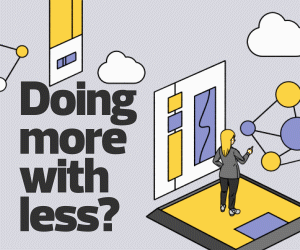Partnerships Highlight Value of Two-Year and Certificate Programs
One of the advantages community colleges have over some of their four-year counterparts is their close connection to the cities and regions where they operate. Many are a significant source of talent for local businesses, especially in the so-called trades, and some offer reskilling or upskilling for workers as industries evolve within those communities.
In these instances, there is as much at stake for the communities themselves if enrollment starts to dry up. Working with local government and business leaders to stay on top of what those industries need today and for the future helps ensure that students will be drawn to those colleges if they plan to work in their local industries.
In some cases, that may mean students earning associate degrees or even transferring to four-year institutions, but in plenty of other instances, students may only need a certificate or microcredential. This is another area where community colleges led what’s now a widespread trend.
Working in conjunction with local leaders, community colleges can and should tailor programs to what the economy will need to grow. Colleges put themselves in an even stronger position when they use the same technology that students will find in the workplace or incorporate virtual reality (VR) or other immersive tools to simulate the experience.
WATCH: See how this college’s technology center supports the next generation of manufacturing.
Technology Drives In-Person Attendance at Community Colleges
Like every higher education institution, community colleges fully embraced online and hybrid learning when the pandemic upended traditional teaching three years ago. However, convincing students to return to the classroom is in many ways more challenging for two-year schools than for their four-year counterparts.
Four-year institutions have bustling student dorms, Greek life, major athletic programs and more that they sell as part of the on-campus experience, and all of that has its merits. Community colleges, meanwhile, serve a more transient student population that includes working professionals, parents and others who may not have the time, energy or resources to get to campus, sit in a classroom, and stick around for socializing or networking afterward.
Yet, in some cases, community college funding is tied to in-person enrollment, and a positive in-person experience can make students more likely to persist through their programs and earn their degrees. Even students who may be resistant to attending in person full time still want the opportunity to join some of the time.
To make sure that the in-person or hybrid experience meets student expectations, community colleges should be investing in the technology necessary to teach effectively in any modality. At the very least, they should use the same tech or better than students are familiar with in their local K–12 districts.
Investing in interactive flat-panel displays, collaborative furniture, 3D printers and immersive learning experiences can go a long way toward convincing students to return to campus.
This article is part of EdTech: Focus on Higher Education’s UniversITy blog series.












